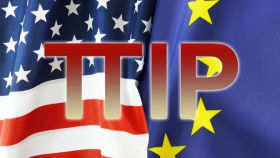Analytics, Baltic Export, Estonia, EU – Baltic States, Legislation, Markets and Companies, USA
International Internet Magazine. Baltic States news & analytics
Wednesday, 07.01.2026, 01:22
TTIP could boost Estonia's exports by 13%
 Print version
Print version |
|---|
"One of the major obstacles to export for SMEs now is insufficient knowledge about the terms and conditions of export in the market of destination. Therefore information exchange has been dealt with in the article of the accord on SMEs – the parties to the agreement must share information online, which should help entrepreneurs understand the terms of the agreement and how to make use of the agreement. If a small company in Estonia wishes get information on how to make it to the U.S. market with its product or service, it has to be able to get all the answers online," Ratso told Postimees in an interview.
Ratso said that besides SMEs will benefit from the reduction in tariffs resulting from the agreement, especially in sectors where SMEs make up a large portion of businesses, such as in the food, garment and textile industry.
"The reduction in non-tariff barriers will also be good, since small companies have less money to deal with red tape," she said.
"Estonian SMEs are champions in transatlantic trade compared with businesses in the other member states, as among the companies exporting to the U.S.A. they account for 65% of total exports – the highest indicator in the EU," Ratso said.
Negotiations on the TTIP launched in July 2013, with the goals of eliminating duties and other restrictions on trade in goods; freeing up commercial services; and providing the highest possible protection, certainty, and level playing field for American and European investors. Removing unnecessary regulatory constraints on trade and facilitating customs procedures are also key areas of interest.
The EU-U.S. transatlantic economy represents the largest economic relationship in the world, accounting for more than 40% of world trade.








 «The Baltic Course» Is Sold and Stays in Business!
«The Baltic Course» Is Sold and Stays in Business!

